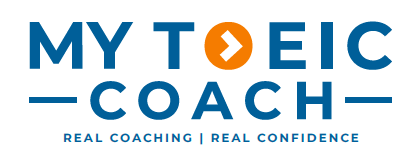📘 Why “None of the Documents Is Missing” Sounds Wrong — But Isn’t
How TOEIC Tries to Trick You with None, Either, and Neither
These words look simple — until you hit a TOEIC question and suddenly doubt yourself:
“Wait… is it singular or plural?”
TOEIC knows this hesitation, and it builds high-difficulty Part 5 traps around it. The trick is to slow down, check the meaning, and choose the form TOEIC expects — not the one that just “feels” right.
1️⃣ “None” — Think “Not One”
Your brain sees documents and wants to go plural. But “None of the documents is missing” means zero are missing — “Not one is missing.”
✅ Correct in TOEIC style: None of the reports is missing.
❌ Common wrong answer: None of the reports are missing.
📌 You can hear “None are…” in casual English, but TOEIC usually goes with the clear, logical “is” form in formal writing.
2️⃣ “Either” and “Neither” — Think “One”
Either = one or the other.
Neither = not one, not the other.
Even if a plural word comes right after, the focus is still on a single choice.
✅ Either time slot is fine.
✅ Neither answer is correct.
❌ Either time slots are fine. (Feels okay, but TOEIC prefers singular here.)
3️⃣ The “Nearest Word” Twist
When “neither” or “either” connects two subjects with or/nor, the form depends on the subject closest to the action word.
Example:
Neither the VP nor the managers ___ available.
(A) is
(B) are
(C) was
(D) weren’t
✅ Answer: (B) are — The word closest to the blank is “managers” (plural), so use the plural form.
4️⃣ TOEIC-Style Practice
Q1. None of the equipment ___ missing.
(A) is
(B) are
(C) have
(D) were
✅ Answer: (A) is — Equipment is uncountable; “none” = “not one” here.
Q2. Either option ___ fine for the meeting schedule.
(A) are
(B) is
(C) were
(D) be
✅ Answer: (B) is — Only one of the two options will be chosen.
Q3. Neither the manager nor the assistants ___ in the office today.
(A) is
(B) are
(C) was
(D) be
✅ Answer: (B) are — Closest subject (“assistants”) is plural.
Q4. None of the proposals ___ approved so far.
(A) has been
(B) have been
(C) was being
(D) is being
✅ Answer: (B) have been — “Proposals” is plural, and TOEIC can choose plural if the meaning points to more than one.
📌 Strategy / Takeaway
None — Think “not one.” Often singular in TOEIC style.
Either — One or the other → singular form.
Neither — Not one, not the other → singular form.
If “or/nor” connects two subjects, match the form to the one closest to the action word.
Golden Rule:
Don’t just trust what sounds okay — check what the sentence is really counting: one, none, or more than one.
Final Word
TOEIC sets these traps to make you hesitate and pick the form that “feels” right. Slow down, check the meaning, and match the form to the logic — you’ll score while others stumble.
For more strategies and resources to master TOEIC singular/plural traps, visit the English Library Collection and start locking in agreement confidence today.

